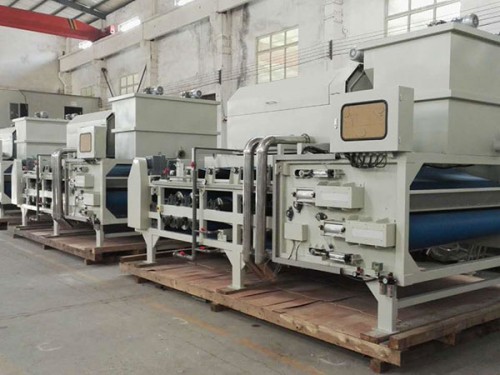Industries
Whether selecting a current product from our catalog or seeking engineering assistance for your application, you can talk to our customer service center about your sourcing requirements. We are looking forward to cooperating with friends from all over the world.
-

Municipal Sewage Treatment
Sludge Belt Filter Press in Beijing Sewage Treatment Plant A sewage treatment plant in Beijing was designed with a daily sewage treatment capacity of 90,000 tons using the advanced BIOLAK process. It takes advantage of our HTB-2000 series belt filter press for sludge dewatering on site. The average solid content of sludge can reach over 25%. Since being put into use in 2008, our equipment has operated smoothly, providing superb dehydration effects. The client has been highly appreciative. ... -

Paper & Pulp
The papermaking industry is one of the 6 main industrial pollution sources in the world. Papermaking wastewater is mostly sourced from the pulping liquor (black liquor), intermediate water, and the white water of the paper machine. Wastewater from paper facilities can severely pollute the surrounding water sources and cause great ecological damage. This fact has aroused the attention of environmentalists all over the world. -

Textile Dyeing
The textile dyeing industry is one of the leading sources of industrial wastewater pollution in the world. Dyeing wastewater is a mixture of materials and chemicals used in the procedures of printing and dyeing. The water often contains high concentrations of organics with great pH variation and the flow and water quality display enormous discrepancy. As a result, this kind of industrial wastewater is hard to handle. It gradually damages the environment if not properly treated. -

Palm Oil Mill
Palm oil is a critical part of the global food oil market. Currently, it occupies over 30% of the total content of consumed oil around the world. Many palm oil factories are distributed in Malaysia, Indonesia, and some African countries. A common palm oil-pressing factory can discharge approximately 1,000 tons of oil wastewater every day, which may result in an incredibly polluted environment. Considering the properties and treatment processes, the sewage in palm oil factories is quite similar to domestic wastewater. -

Steel Metallurgy
Ferrous metallurgy wastewater features complex water quality with varying amounts of contaminants. A steel plant in Wenzhou makes use of the main treatment processes such as mixing, flocculation, and sedimentation. The sludge usually contains hard solid particles, which may lead to severe abrasion and damage to the filter cloth. -

Brewery
Brewery wastewater primarily consists of organic compounds like sugars and alcohol, making it biodegradeable. Brewery wastewater is often treated with biological treatment methods like anaerobic and aerobic treatment. -

Slaughter House
Slaughterhouse sewage not only features biodegradable pollutant organics, but also includes significant amount of harmful microorganisms which can be dangerous if released into the environment. If left untreated, you could see serious damage to the ecological environment and to humans. -

Biological & Pharmaceutical
The sewage in the biopharmaceutical industry is made up of the wastewater discharged from various factories for manufacturing antibiotics, antiserums, as well as organic and inorganic pharmaceuticals. Both volume and quality of wastewater vary with the types of manufactured drugs. -

Mining
Coal washing methods are divided into wet type and dry type processes. The coal-washing wastewater is the effluent discharged in the wet type coal washing process. During this process, water consumption required by each ton of coal ranges from 2m3 to 8m3. -

Leachate
The volume and composition of the landfill leachate varies with the season and climate of different refuse landfills. However, their common characteristics include multiple varieties, high content of pollutants, high degree of color, as well as high concentration of both COD and ammonia. Therefore, landfill leachate is a kind of wastewater that is not easily treated with traditional methods. -

Polycrystalline Silicon Photovoltaic
Polycrystalline silicon material usually produces powder during the cutting process. When passing through a scrubber, it also generates a large amount of wastewater. By utilizing a chemical dosing system, the wastewater is precipitated to realize the preliminary separation of sludge and water. -

Food & Beverage
Significant wastewater is produced by the beverage and food industries. The sewage of these industries is mostly characterized by extremely high concentration of organics. In addition to lots of biodegradable pollutants, the organic matter includes a large number of harmful microbes that may affect human health. If the wastewater in food industry is directly thrown into the environment without being effectively treated, the severe damage to both human beings and the environment could be disastrous.











